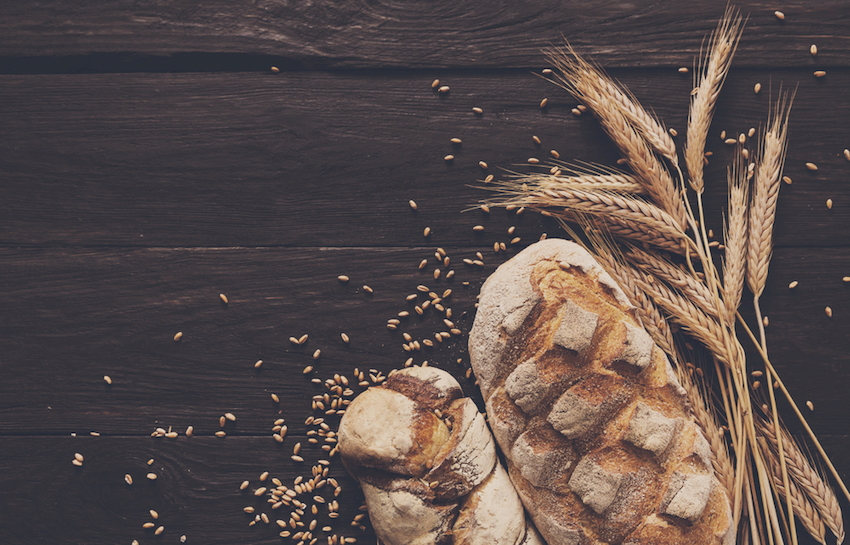
Why is everyone going gluten-free and ditching wheat-based products? It seems that every second person is allergic, intolerant, or unwilling to consume wheat-based products today. It’s not just a trendy fad, there are very solid reasons behind this shift. Many are asking, what’s changed in our bodies to make us allergic to something we’ve eaten for centuries… however, we’re finding the answers have nothing to do with our bodies, it’s the modern wheat!
We dug deep into the grain to discover the origins of wheat, how it has evolved and why our modern wheat is working against us.
The History of Wheat
Wheat has long been a dominant crop around the world, primarily used for food and livestock feed. Its cultivation began over 10,000 years ago in southeast Turkey during the Neolithic Revolution. Since then, humanity has continuously sought ways to harvest more of this golden grain.
In the 1870s, the invention of the modern steel roller mill transformed grain milling. It became much faster and easier to produce fine white flour compared to old stone grinding methods. This new process made wheat flour cheaper and longer-lasting. Even bugs started avoiding it—a red flag we overlooked.
Fast-forward to the 1950s and 1960s: scientists revolutionized the global wheat crop, a development known as the “Green Revolution.” This new breed of wheat produced higher yields and was far more efficient.
Norman Borlaug led this movement and won a Nobel Prize for his work. He developed high-yield varieties of cereal grains, promoted irrigation infrastructure, and introduced modern farming techniques. These included distributing hybrid seeds, synthetic fertilizers, and pesticides. Farmers could now produce more wheat, faster, with fewer pest problems. Most people celebrated this progress and trusted that the wheat remained as nutritious as ever.
Borlaug is credited with saving one billion lives and reducing global hunger. However, we now face widespread health issues linked to this altered wheat.
While the Green Revolution boosted production and profits for pesticide companies, it failed to deliver lasting benefits for human health and nutrition.
Dr. William Davis, author of Wheat Belly, notes that today’s high-yield wheat is “a distant relative of the wheat our mothers used to bake muffins.” Genetically and biochemically, it’s light-years away from the wheat we ate just 40 years ago.
More Changes In Wheat Production
After 1985, wheat became a cheap and versatile ingredient. It started appearing in nearly all processed foods—from bread to sauces and everything in between. Around this time, calorie intake surged, and so did cases of autoimmune diseases, diabetes, respiratory issues, and food allergies.
The food had changed. Although eating habits remained mostly the same, people unknowingly consumed more calories and new forms of wheat. The result? Expanding waistlines and growing health problems.
One noticeable issue was a rise in respiratory allergies among bakers, commonly known as baker’s asthma. Recent studies show that baker’s asthma is now the second most common occupational allergy in the UK. Alarmingly, it affects over 8% of apprentice bakers after just two years on the job.
Even more concerning is the growing number of people with dietary intolerance to wheat. Coeliac disease (CD), one of the most serious forms, is estimated to affect about 1% of the population in Western Europe—and the numbers continue to rise.
Going Against the Modern Wheat
Over the past decade, studies have shown a strong link between coeliac disease (CD) and the immune system’s response to gluten. This autoimmune reaction occurs when gluten peptides bind to T cells, triggering inflammation.
Wheat proteins have also been associated with allergic reactions like atopic dermatitis, urticaria, and anaphylaxis. If left untreated, these conditions can lead to serious health problems.
Most of these reactions have been linked to gluten, fueling the rise of gluten-free foods. While levels of gluten intolerance vary, many people experience mild to moderate sensitivity to modern wheat. This can lead to inflammation and spikes in blood sugar, both of which harm gut health.
Experts estimate that about 5% of the protein in hybridized wheat consists of new proteins not present in the original wheat strains. These unfamiliar proteins contribute to inflammation and make gluten harder to tolerate.
As Dr. William Davis explains, “Products made from modern wheat contain forms of gliadin proteins, glutenins, wheat germ agglutinin, and other proteins never before encountered by humans.”
When the body can’t properly process gluten or wheat, it may trigger the gut to release zonulin. This protein breaks apart the tight junctions between intestinal cells, leading to what’s known as a “leaky gut.” Once that barrier is compromised, toxins, microbes, and undigested food can leak into the bloodstream—causing widespread inflammation and even issues with your bladder.
How Do I Know if I Have an Intolerance to Gluten or Wheat?
Simple. Just cut it out of your diet for three to four weeks and make note of any changes that you feel in your body, after which reintroduce it. If you notice changes or feel significantly worse after reintroducing gluten, it might be time to head to the doctor and ask for the following tests:
- IgA anti-gliadin antibodies (these are found in about 80% of people with celiac disease)
- IgG anti-gliadin antibodies
- IgA anti-endomysial antibodies
- Tissue Transglutaminase antibodies
- Total IgA antibodies
- Genetic testing (HLA DQ2 and HLA DQ8)
- An intestinal biopsy
Cutting out the wheat from your diet doesn’t mean you’ll miss out – there are so many recipes full of healthy and delicious ingredients that negate the need for wheat and will have you saying ‘what wheat’.


